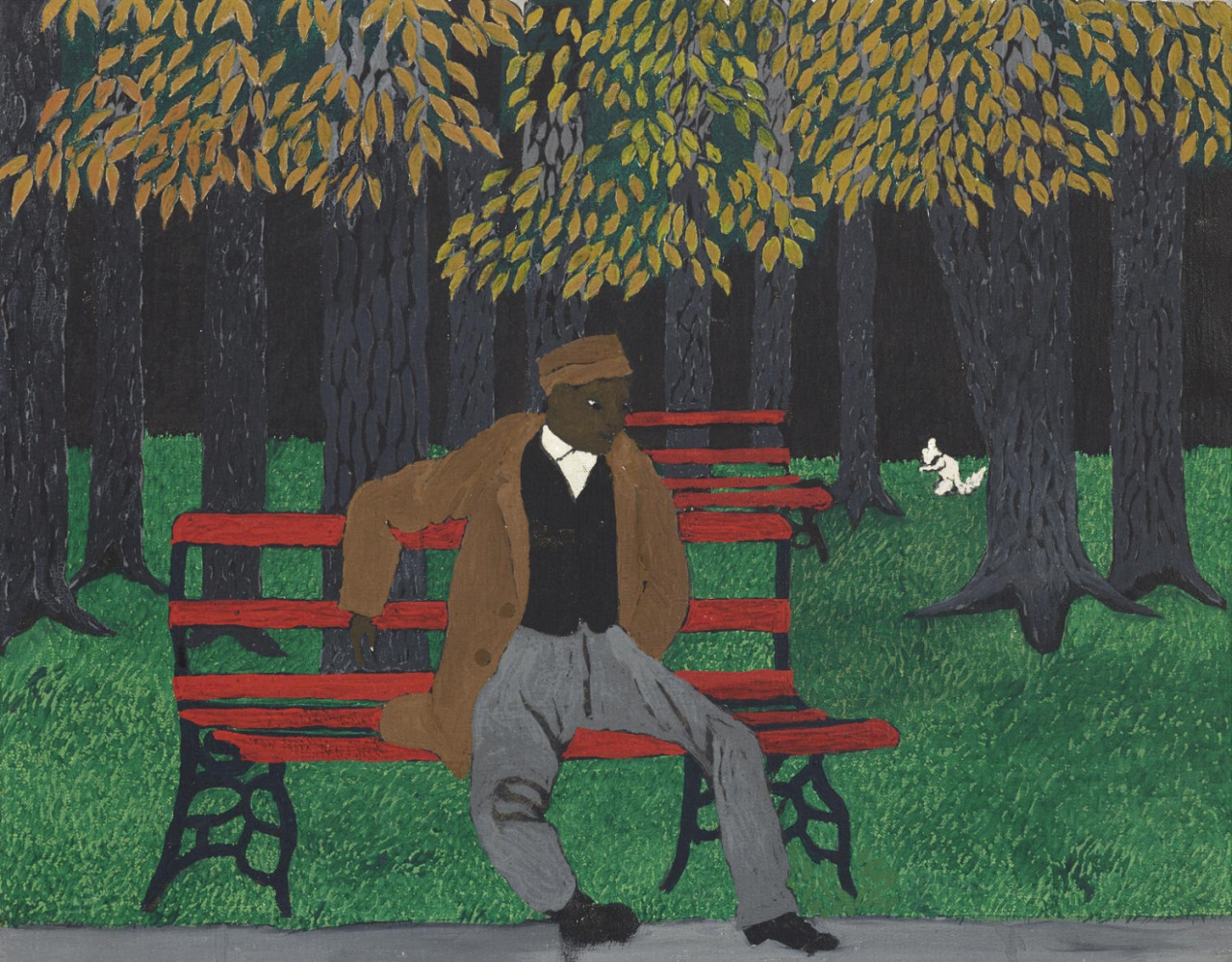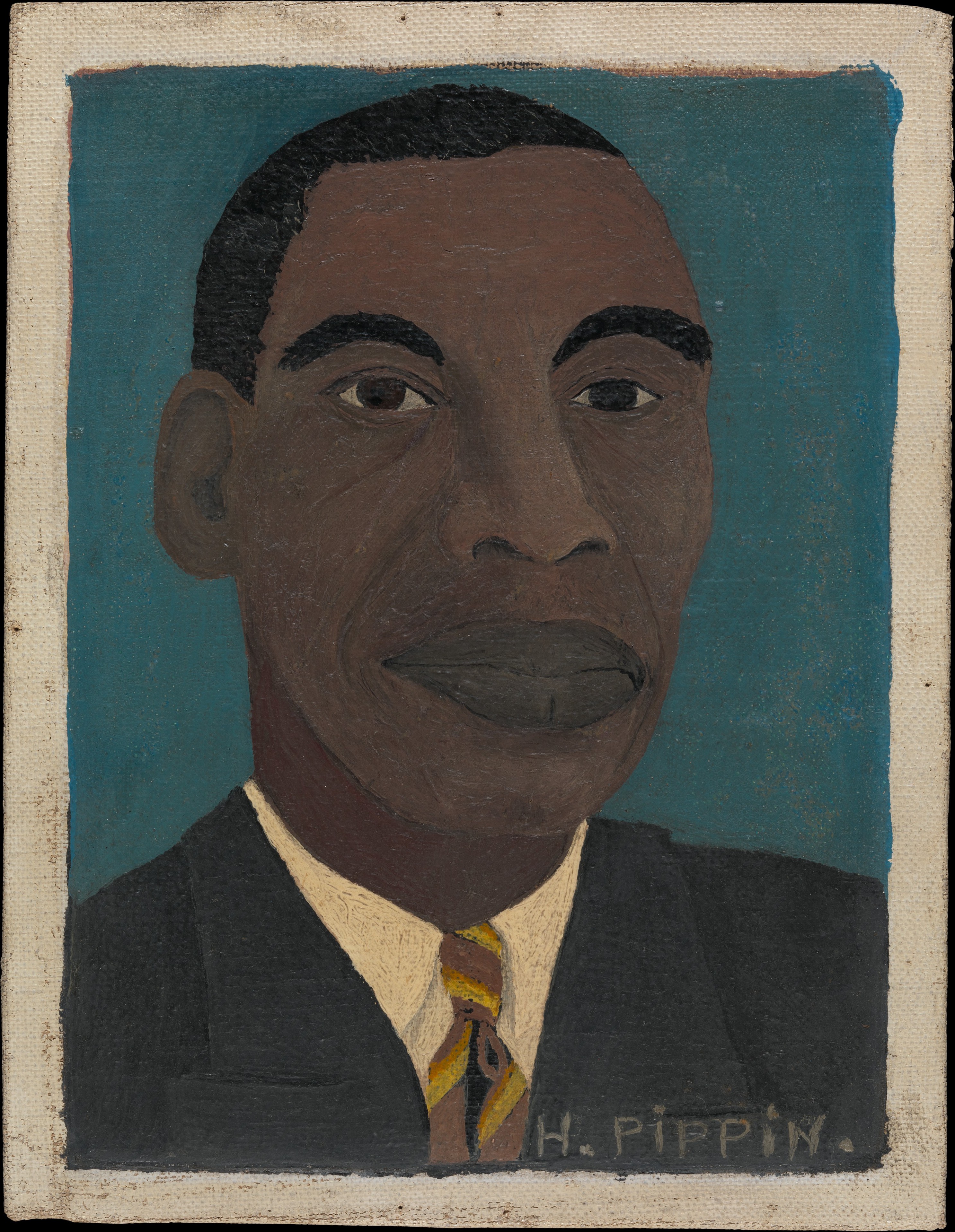Looking back during the autumn of one's life is the theme of this (presumed) autobiographical painting by African American artist Horace Pippin. Although a peaceful, contemplative painting, "The Park Bench" is tinged with sadness. It was painted the year of Pippin's death at the age of 58. A self-taught artist from Pennsylvania (US), he began painting as therapy after World War I. Pippin was a member of the 369th regiment, the first African American infantry division deployed to Europe. They were known as the Harlem Hell Fighters because of the extreme conditions they were exposed to. During his tour of duty, Pippin kept a journal illustrated with pencil sketches. He later said that the war "brought out all the art in me." One month prior to the armistice, a German sniper's bullet shattered Pippin's right shoulder which rendered him permanently disabled. Eleven years later, Pippin began his first painting, a scene from the war, as both physical and emotional therapy. He used his left hand to support and move his right arm and hand in which he grasped a paintbrush. It was a painful and tedious process. Over the next several years, Pippin created a number of somber paintings with this technique using scavenged house paint and used brushes. At age 49, after eight years with no recognition, Pippin's work was discovered by a local artist, celebrated illustrator N.C. Wyeth, at an art show in town. Not long thereafter, Pippin's paintings were included in a traveling exhibit, and he received widespread recognition. People were fascinated with his portrayal of African American life, and his paintings were purchased by wealthy collectors, Hollywood celebrities, and museums.
Pippin was an untrained artist, yet despite the flat, simplified images, his paintings have an emotional intensity in their directness. "When I'm through with a picture, I've put everything in it I've got to give," he reflected. The subjects of his paintings often mirror things that impacted his life: the war, family, community, and religion. He also created several historical paintings including three of famed abolitionist John Brown. Sadly, the rise to fame took a toll on Pippin's life. There was pressure to produce more and better paintings which led him to drink heavily, his wife suffered physical and mental health issues, and his marriage was failing. Although Pippin left a legacy of nearly 140 paintings and drawings, "The Park Bench" is a poignant portrait of an unassuming man whose art came from the heart.
- Martina


 Horace Pippin
Horace Pippin